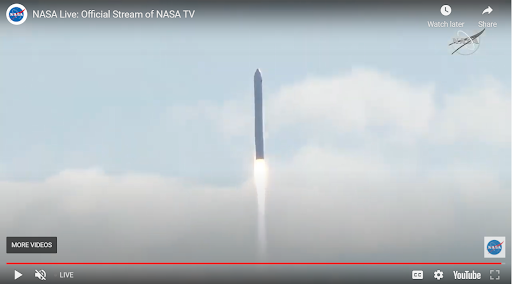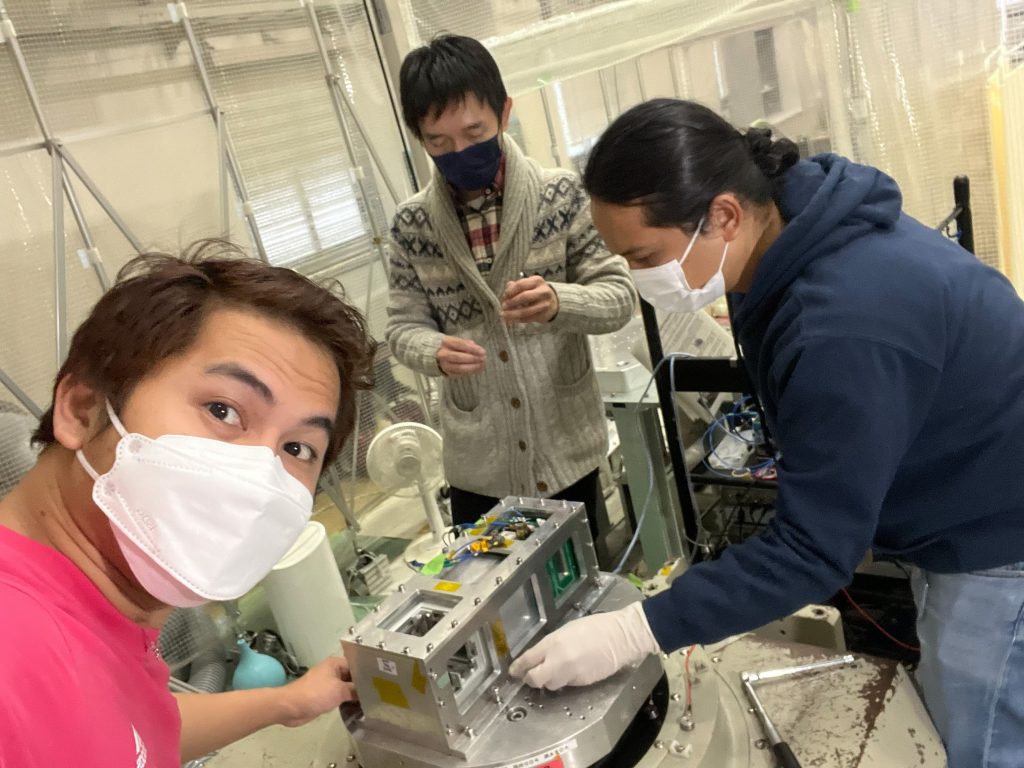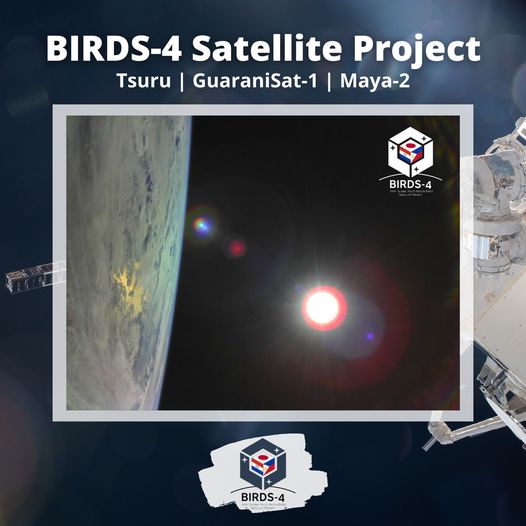
Everyone anticipated the launch of the S.S. Katherine Johnson Cygnus spacecraft as it ferried three CubeSats developed under the Kyushu Institute of Technology (Kyutech)’s 4th Joint Global Multi-Nation Birds Satellite (BIRDS-4) Project to the International Space Station (ISS) last February 21, 2021. The three 1U CubeSats, which fall under the nanosatellite category in terms of mass (1-10 kg), were Maya-2 (Philippines), Tsuru (Japan), and GuaraniSat-1 (Paraguay).

Courtesy of NASA Live Stream
Now a year later, the engineers who developed Maya-2 are still in awe of their achievements with the launch of the country’s second CubeSat that day.
“That was only one year? It felt longer to me because of the operations when it became harder to differentiate days from each other since we had to go to the GS (ground station) whenever the satellite passes at a high elevation. But nevertheless, I’m amazed that our team was able to send an object to space, a few hundred kilometers from Earth, and communicate with them; get images and data taken from space,” said Maya-2 engineer Dr. Izrael Zenar Bautista.

The Maya-2 engineers, who are taking their doctorate degrees in Japan through the support of the DOST-Science Education Institute (DOST-SEI), were sent to Kyutech through the Space Science and Technology Proliferation through University Partnerships (STeP-UP) Project of the Space Technology and Applications Mastery, Innovation and Advancement (STAMINA4Space) Program.
“After the BIRDS-4 satellites were released in space, we continuously learned about the satellites. It gives me joy to have finally seen the fruit of our hard work while still learning and doing satellite operations. Of course, the work didn’t end when the satellites were released. We have been constantly executing missions and downloading data to check the success of our missions,” said Engr. Mark Angelo Purio, one of the engineers who worked on Maya-2.
Maya-2 and the other BIRDS-4 cubesats were released into orbit from the ISS on March 14, 2021 at around 7:20 p.m. PHT.
“Knowing that the satellite works in space and fulfills its missions brings pride and joy. It has become part of our lives — from the satellite project kick-off in 2018, satellite launch in 2021, up to its daily satellite ground station operations. I am looking forward to another year’s celebration, just like Maya-1,” said Engr. Marloun Sejera.
The BIRDS-4 team comprised 14 engineers from different countries, three of which are Filipinos. Most of the engineers have completed their degrees while some are still studying. Dr. Bautista graduated in December 2021 and is currently working for the Philippine Space Agency (PhilSA) to continue his research in the field of space and satellite technology.

Engr. Purio is currently working on a journal publication and dissertation, and Engr. Sejera is currently working on a 6U CubeSat project targeted for launch by the end of February and other activities related to CubeSat electrical interface standardization. Both are candidates for graduation this year.

Engr. Purio also plans to teach again in Adamson University. “I plan to go back to Adamson to teach again and maybe help in the initiatives of PhilSA and STAMINA4Space programs. Being affiliated with Adamson University, there are already plans to set up a Space Engineering lab with a ground station so we can continue to participate in the satellite operations of the BIRDS network. We have also included a space engineering track in our recent curriculum.”

The BIRDS-4 team also helped in the testing of the Maya-3 and Maya-4’s engineering and flight models, both of which were already launched into orbit last October 6, 2021. The team also helped in the procurement and engineering model tests of the Maya-5 and Maya-6 satellites, both still under development.

Much like Maya-1, Maya-2 is a technology demonstration and educational platform geared to collect data remotely by Store-and-Forward (S&F) Mechanism. Maya-2 is equipped with a camera for image and video capture, an Automatic Packet Reporting System Message Digipeater (APRS-DP), attitude determination and control units for active attitude stabilization and control demonstrations, Perovskite solar cells, and Latchup-detection chip. Apart from the similarity of the platforms, Maya-2 was developed and improved using the knowledge gained from the development of its predecessor.
To date, the CubeSats are still orbiting the earth. The BIRDS ground stations operate the satellites: check the satellites’ health, collect housekeeping data, execute missions, and download data. Updates on the CubeSats and activities of the BIRDS-4 Team are posted on their Facebook page.

On July 3, a tropical depression above the Philippines was observed by PAGASA
while Typhoon Fabian consequently entered the Philippine area of responsibility on July 16, 2021.
About the Maya-2 Successors
The first Philippine university-built CubeSats, Maya-3 and Maya-4, were launched to the ISS on August 29, 2021 and released into orbit on October 6, 2021. Beacons of the CubeSats were successfully received and decoded the following day through the Philippine Universities Ground Archiving and Data Reception (PUGAD) station in UP Diliman. The satellites were developed by the first batch of STeP-UP scholars.
Maya-3 and Maya-4’s successors, Maya-5 and Maya-6, are currently under development by the second batch of STeP-UP scholars and are slated for launch into space later this year.
About the PHL-Microsat and STAMINA4Space Programs
The PHL-Microsat program is the country’s first initiative in developing the country’s capability in small satellite technology. Through its 4 years of implementation, it successfully launched two microsatellites: Diwata-1 and Diwata-2; and a nanosatellite, Maya-1. It is funded by the Department of Science and Technology (DOST), monitored by DOST-Philippine Council for Industry and Emerging Technology Research and Development (PCIEERD), and done through the collaboration between the University of the Philippines Diliman, the DOST-Advanced Science and Technology Institute (DOST-ASTI), Hokkaido University and Tohoku University.
The PHL-Microsat Program is succeeded by the Space Technology and Applications Mastery, Innovation and Advancement (STAMINA4Space) Program. STAMINA4Space is aimed at further developing deep expertise that enable and sustain the growth of a local scientific-industrial base in space technology and applications in the Philippines. Through science-based policies and programs supported by innovations in space technology, STAMINA4Space intends to contribute to building a resilient Filipino society and a productive, knowledge-based economy.
For more images of Diwata-1 and Diwata-2, visit us at phl-microsat.upd.edu.ph/updates and follow us on Twitter @STAMINA4Space. We are also on Facebook and Instagram.
For inquiries, e-mail: stamina4space@eee.upd.edu.ph.

